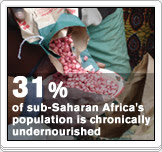 The client is always right. We never blame him for his mistakes. Like a physician will not blame the patient for being sick. Our aim is not to be ‘right’. We accept a ‘second best’ solution, as long as it comes from the client. The client’s organization never functions in an ideal way. There is always something to improve. Even when implementing our advice they make many mistakes. As long as there is a positive impact, we wait until the next opportunity to help them improve. Learning goes step by step. This were my thoughts this weekend when flying back from my assignment over the last few months. Remember verse 13 of the Tao Te Ching:
The client is always right. We never blame him for his mistakes. Like a physician will not blame the patient for being sick. Our aim is not to be ‘right’. We accept a ‘second best’ solution, as long as it comes from the client. The client’s organization never functions in an ideal way. There is always something to improve. Even when implementing our advice they make many mistakes. As long as there is a positive impact, we wait until the next opportunity to help them improve. Learning goes step by step. This were my thoughts this weekend when flying back from my assignment over the last few months. Remember verse 13 of the Tao Te Ching:Accept disgrace willingly. Accept misfortune as the human condition.
What do you mean by "Accept disgrace willingly"?
Accept being unimportant. Do not be concerned with loss or gain. This is called "accepting disgrace willingly."
What do you mean by "Accept misfortune as the human condition"?
Misfortune comes from having a body. Without a body, how could there be misfortune?
Surrender yourself humbly; then you can be trusted to care for all things.
Love the world as your own self; then you can truly care for all things.




















